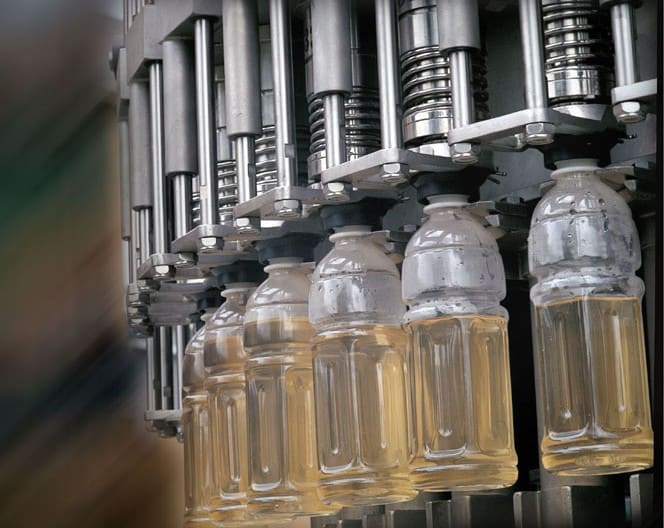Common Issues and Fixes for Bottle Blowing Machines
Bottle blowing machines are, however, indispensable in the packaging industry, though, just like any other machine, they are not exempt from a variety of problems that may occur and affect their performance and quality of production. The identification of common problems, causes, and effective solutions will help in the smooth running of operations and consistent production. This article will look into the most frequent challenges users face with bottle blowing machines and give actionable tips to resolve them efficiently.
1. Causes and Solutions for Bottle Blowing Machine Startup Failure
Possible Causes
1. Connection to Power: Disconnection in power supply or damage of power cable.
2. The emergency stop button has perhaps been depressed, and this could prevent the machine from attempting to turn on.
3. Control System Failure: Errors or damage may occur to a PLC or the main control system.
Additional Tips
·Always verify the correct startup procedure in the user manual.
·Ensure the working environment meets the recommended temperature and humidity conditions.
·Regular maintenance helps in spotting the problem before it occurs.
2. Causes of Substandard Bottle Blowing Machine Product Quality
Possible Causes
1.Uneven Heating Temperature: Uneven heating in the different zones of the machine may lead to the bottle having different thicknesses or deformed.
2.Mold Misalignment: The wrongly aligned mold could have an improper shape and some flaws on its surface.
3.Insufficient Air Pressure: Insufficient or non-stable air pressure within the blowing process impinges on both the structural strength and good appearance of the bottle.
Additional Best Practices
·Use high-quality preforms to improve the final product’s consistency.
·Clean the heating zones and molds regularly from any residues that may affect their performance.
·Air pressure should be monitored with a calibrated gauge to show real-time changes.
Addressing these factors systematically can go a long way in enhancing the quality of bottles produced and reducing waste.

3. Causes and Solutions for Air Leakage in Bottle Blowing Machines
Possible Causes
1. Cracked or Aging Air Pipelines: The longer the use, the more chances of having some cracks, leakage, or weakened part along the air pipelines.
2. Worn or Broken Sealing Rings: Sealing rings, over time, lose elasticity and create gaps for air to escape.
3. Loose Air Fittings or Connections: Poorly tightened joints may cause air leakage during operations.
Inspection and Maintenance Tips
·Routine Leak Testing: Soapy water should be used in checking leakages in pipelines and joints. Bubbles indicate escaping air.
·Use of Quality Components: Switch to heavy-duty, high-performance seals and pipelines that could lower the frequency of maintenance.
·Air Pressure Levels: Monitor the pressure with a pressure gauge to ensure consistent airflow during operation.
·Keep Spare Parts Handy: Stock essential components, such as sealing rings and connectors, to reduce the downtime.
You can maximize your bottle if you solve the problem of air leakage right away.
4. Causes and Solutions for Excessive Noise in Bottle Blowing Machines
Possible Causes
1. Loose Components: Loosened screws, bolts, or parts will result in vibrations that generate excessive noise during operation.
2. Insufficient Lubrication: Without adequate lubrication, friction could increase and cause noisy, rough operations.
3. Damaged Bearings: Worn-out or damaged bearings can create strange sounds during the running of such machines.
Maintenance and Noise Reduction Tips
·Periodic Inspection: Regularly inspect for loose parts or wear in bearings and other moving parts.
·Use Quality Lubricants: Use quality lubricants to reduce friction and wear, which help the machine work smoothly.
·Proper Installation: All the parts are to be properly installed and adjusted for the cancellation of unwanted friction and noise.
·Operating Conditions: Loud noise can sometimes suggest the wrong operating conditions such as high load or temperature; adjust accordingly.
Addressing these general causes of excessive noise goes a long way in raising the bar as far as the life and performance of the bottle-blowing machine are concerned.
5. Causes and Solutions for Decreased Production Efficiency in Bottle Blowing Machines
Possible Causes
1. Aging Equipment: Worn-out parts that slow down the processing rate over time decrease efficiency.
2. Low Performance Heating System: If the heating system is not optimum, the preforms take their time to heat up and hence reduce the production speed.
3. Air Pressure: Poor or low air pressure can lead to interruptions in blowing. This could increase cycle time and hence defects.
Maintenance and Efficiency Optimization Tips
·Maintenance Schedule: Regular maintenance following a detailed schedule ensures that parts are changed before failure, which further enables consistent performance.
·Heating Elements: This needs regular checking for wear and tear and should be replaced with new elements right away.
It aids in the stabilization of air supply through the use of pressure regulators and moisture filters, which keep the pressure even while blocking any machine damages.
·Upgrade Aging Components: If equipment has reached a certain age, then upgrading key components could yield dividends in performance and efficiency.
By addressing these factors and through routine maintenance, you can enhance the effectiveness of a bottle-blowing machine to a larger extent to ensure high returns in the production rate.
6. Daily Maintenance and Care for Bottle Blowing Machines
Key Maintenance Tasks
1. Electrical Circuits:
- Françai
- Español
- Deutsch
- Română
- العربية
- 한국어
- 日本語
- Italiano
- Português
- Gaeilge
- Dansk
- Čeština
- Русский
- Afrikaans
- Euskara
- Català
- Esperanto
- हिन्दी
- Ελληνικά
- Bahasa Melayu
- Polski
- Српски
- Kiswahili
- ภาษาไทย
- Tiếng Việt
- Türkçe
- Svenska
- Cymraeg
- Slovenčina
- Latviešu
- Malti
- Magyar
- Galego
- ગુજરાતી
- Eesti Keel
- বাংলা
- Shqip
- беларуская мова
- Nederlands
- Tagalog
- ქართული
- Íslenska
- Kreyòl Ayisyen
- Lietuvių
- Norsk
- slovenščina
- தமிழ்
- Українська
- ײִדיש
- اردو
- తెలుగు
- فارسی
- македонски
- ಕನ್ನಡ
- Bahasa Indonesia
- עברית
- Suomi
- Hrvatski
- Български
- Azerbaijani

